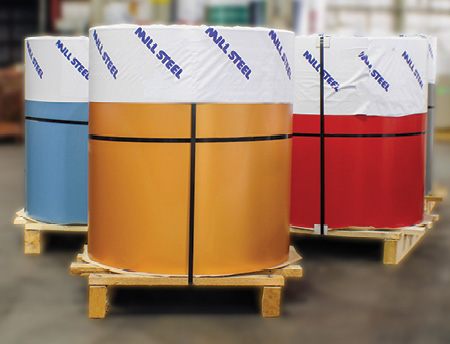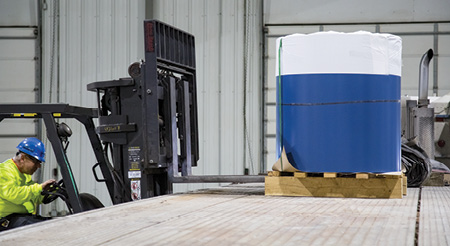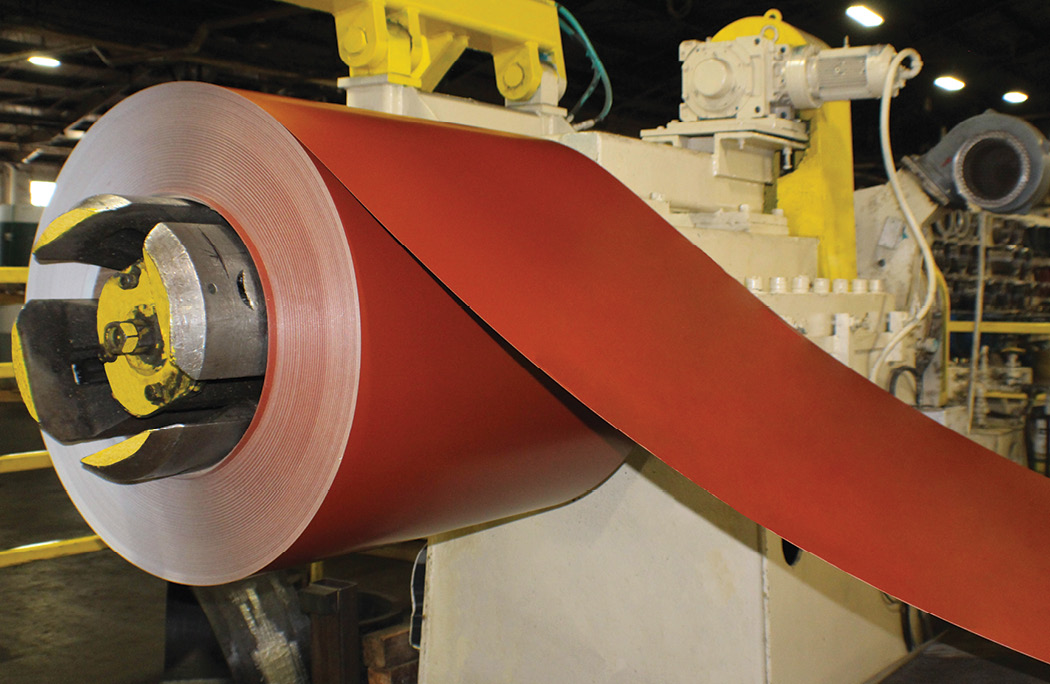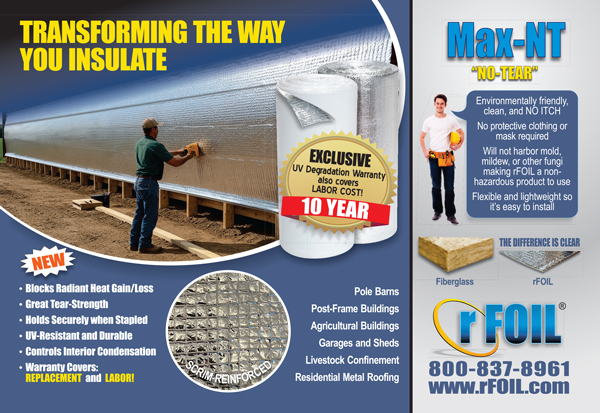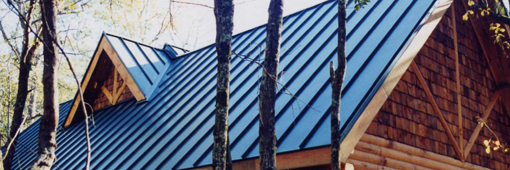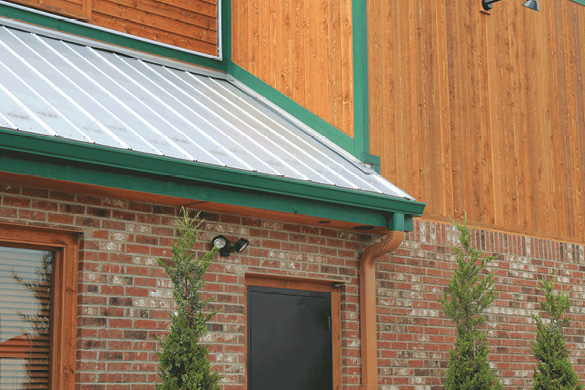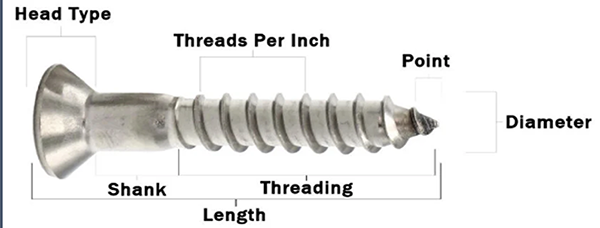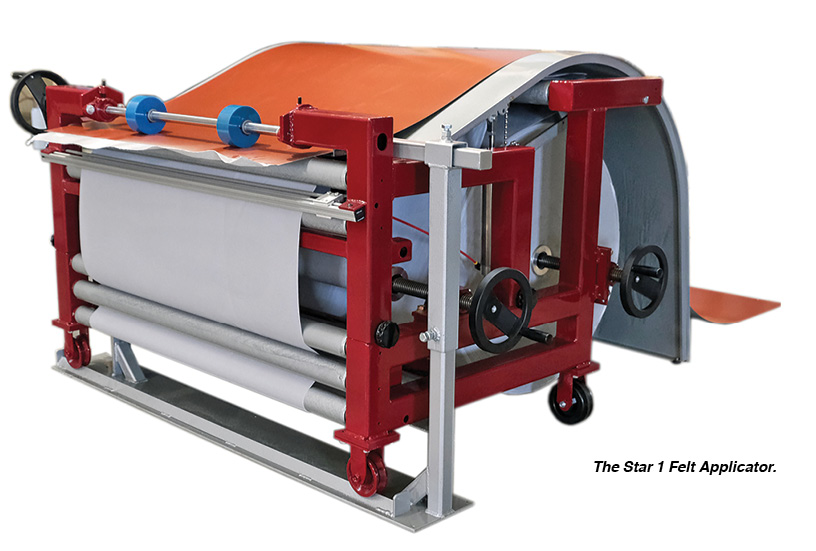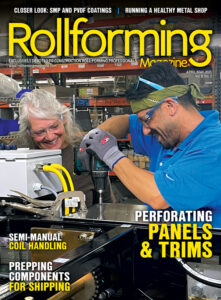Lots of factors play a roll in steel coil selection
Galvalume or galvanized? 26 gauge or 29 gauge? Many contractors have strong opinions about which product they prefer. As a seller of both, Bob Kula from Mill Steel, said it often comes down to application or region.
“In the Midwestern states, the builders in Minnesota, Wisconsin, Iowa, Nebraska, still like the galvanized over Galvalume,” he said. “I think it’s just about how familiar they are with the product and prefer not to switch over to Galvalume. It’s the old saying: “why fix something if it’s not broke.”
There are some obvious reasons for why it may be popular: the region’s strong agricultural roots. Galvanized performs better in confined animal spaces like those found in the Midwest.
Yet, with ag construction down in recent years, builders are becoming more familiar with working with Galvalume for the growing residential market, and thus a new niche is growing.
Kula admits to his own bias towards Galvalume because of its long-term quality after being exposed to all weather conditions as compared to galvanized.
Kula notes that there are several steel producers of Galvalume in the market. Other companies, mostly new foreign suppliers, have developed an aluminum and zinc product marketed under various other trade names. They may or may not be comparable in quality. Just be aware that Galvalume marketed under that name is made and sold only by companies licensed to do so and it is illegal to knowingly try to sell a product called something it is not.
One of the positive sides of Galvalume, Kula explained is that it weighs less per lineal foot than galvanized, “so you’re cost per linear foot or cost per square is less for Galvalume vs. galvanized when comparing the same thickness and width for a building panel”.
When talking to contractors, however, he said the price difference is not enough to cause much concern for smaller buildings. That changes with the size of the project. “Galvalume has become the product of choice for residential, commercial and industrial applications because of the savings per linear foot over galvanized,” he said. “Given the enormous size of some of the industrial buildings, that savings is significant.”
Gauges
Like Galvalume and galvanized, gauges are regionally popular.
“Alabama and Mississippi use a lot of 29 gauge, thinner steel. In Florida and some of the coastal regions they use 26 or 24 gauge, which is thicker; and in the Midwest they really like the crinkle coat steel in 29 & 26 gauge, (Indiana, Ohio, Michigan); out west in Nebraska, Idaho, the Dakotas, they use a lot more 26 gauge.”
The quality of foreign steel
Another ongoing debate concerns domestic versus foreign steel. Kula maintains “the old adage that foreign steel, because it cost less it is inferior, just doesn’t exist, he said, adding: “there are some [foreign] mills where their quality is better, and some where the quality is a little more suspect, but that is also the case here in the United States.”
What it really comes down to, he said, is the substrate: “When it comes to the steel used for roll forming roofs and walls, it all starts with the substrate,” he said. “Whether its galvanized or Galvalume the issues that trickle down through painting and roll forming all starts with a good substrate. If you have problems from the substrate on, it’s pretty difficult to avoid the problems.”
Building codes
Building codes impact what types of steel should be used, and those codes often coincide with Mother Natural: snow loads in Wisconsin, hurricanes and salt spray in Florida. What hold ups up best in those locales?
Building codes may also dictate the grades of steel. “There are hundreds of grades of steel, referring to yield strength,” Kula said. “Generally, Grade 50 is more flexible and easier to roll form. It’s used for gutter and trim. Grade 80 is a stiffer product. When you’re putting up a clear-span building, you want more rigidity in the panel, it doesn’t have to be so flexible.”
What building codes do not dictate is the use of Galvalume or galvanized for a given project.
Sticker Shock for New Roll Formers
Kula has encountered many new roll formers who gave a lot of thought to the purchase price of a roll-forming machine, but failed to consider the cost of steel coil. “They buy a roll former for $100,000 up to a half a million dollars, and they feel they can afford that, but then they realize the first load of steel – 5 or 6 coils – is going to cost $30,000-35,000,” he said. “I think people get sticker shock, like ‘oh my goodness, I didn’t think it would be this much!’ And then they have to provide all these different colors.”
The fluctuating price of steel can make keeping excess inventory a costly endeavor. Realizing that, today’s coil suppliers have positioned themselves to deliver products quickly, helping roll formers to reduce the need for lots of inventory.
As always, however, pay attention to the reputation of your supplier. What happens if the coil fails to perform? In the case of Mill Steel, they have a quality department that responds to problems when needed. Kula explained the process. “Once a customer notifies the sales rep or inside sales rep that there’s an issue, you have a team jumping on it, acquiring samples. They want to resolve the issue as fast as possible, whether it’s to replace material or to adjust a roll former’s tooling. We have an extensive staff that knows a lot about roll forming and how to deal with issues that pop up in the field or their plant.”
Cautioned Kula, “The difference between a good supplier and a bad supplier is how they respond to customers when they have a problem.” RF
